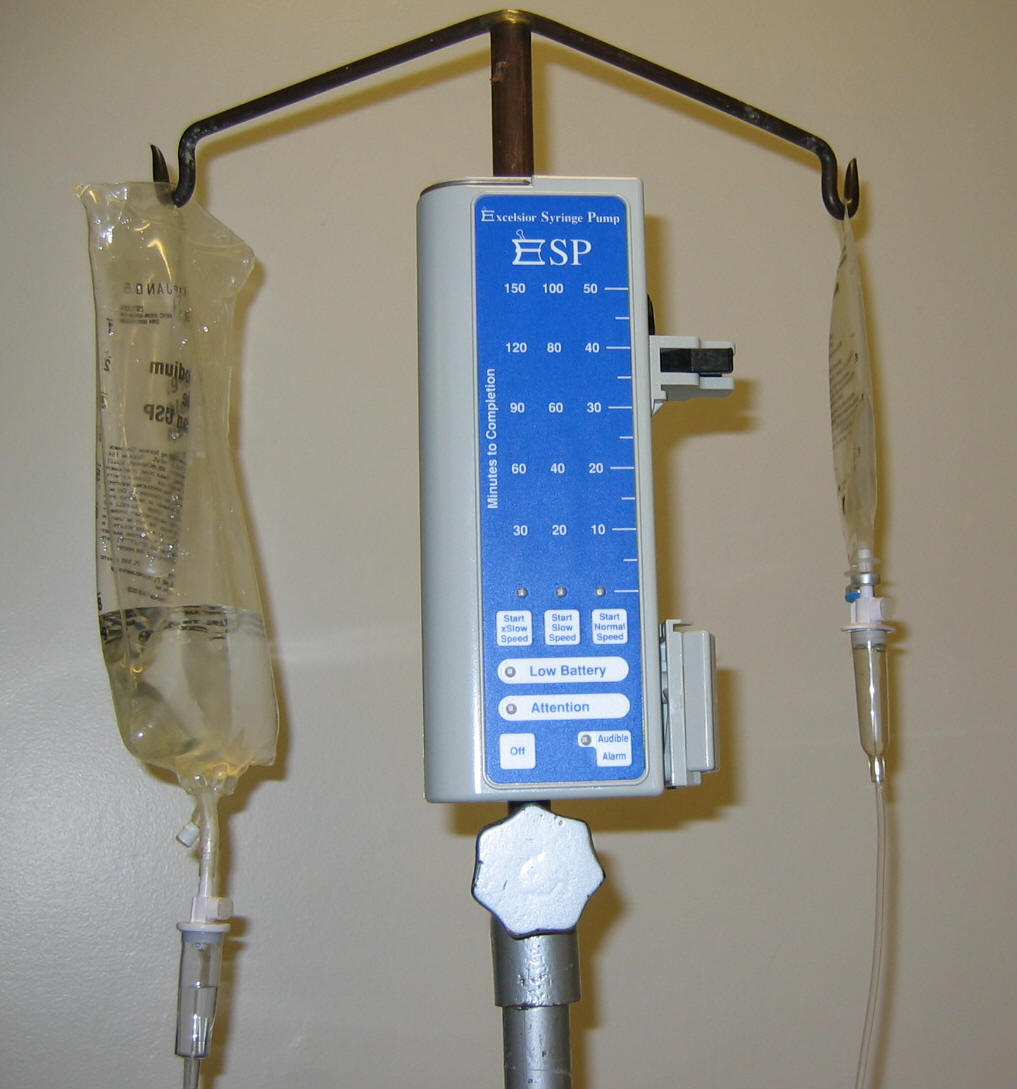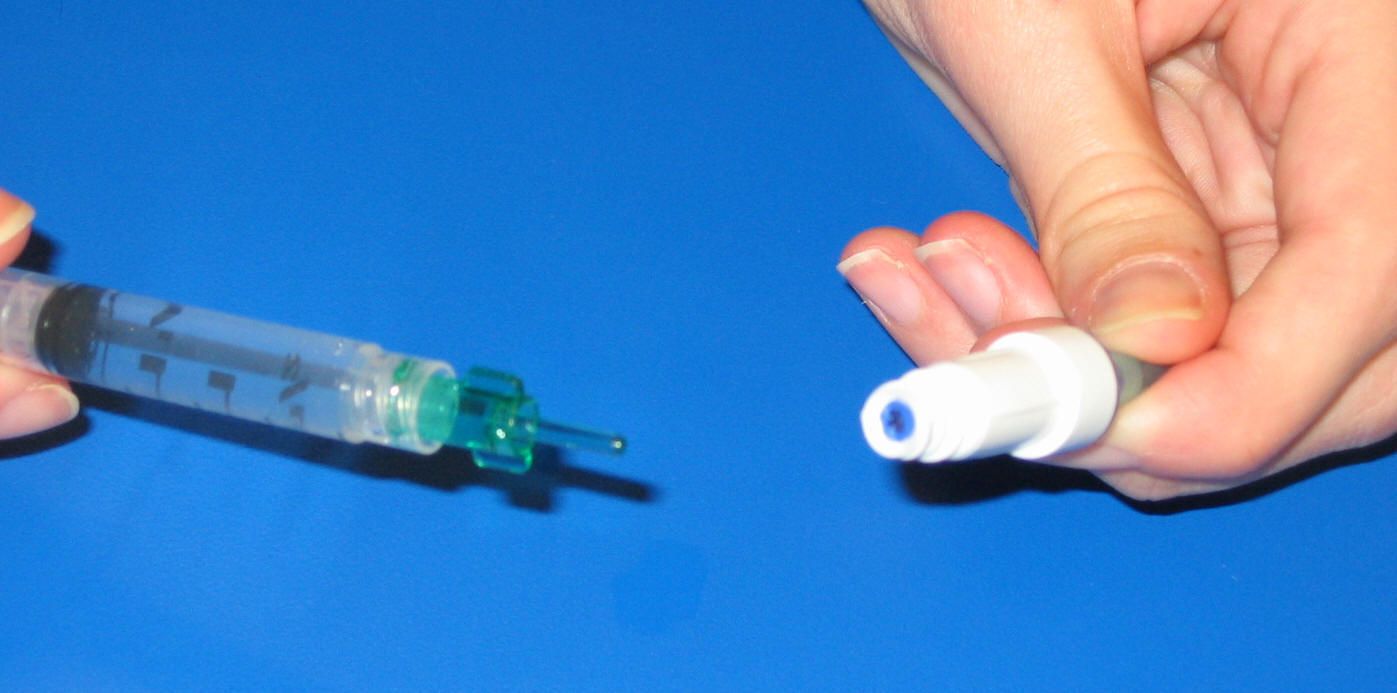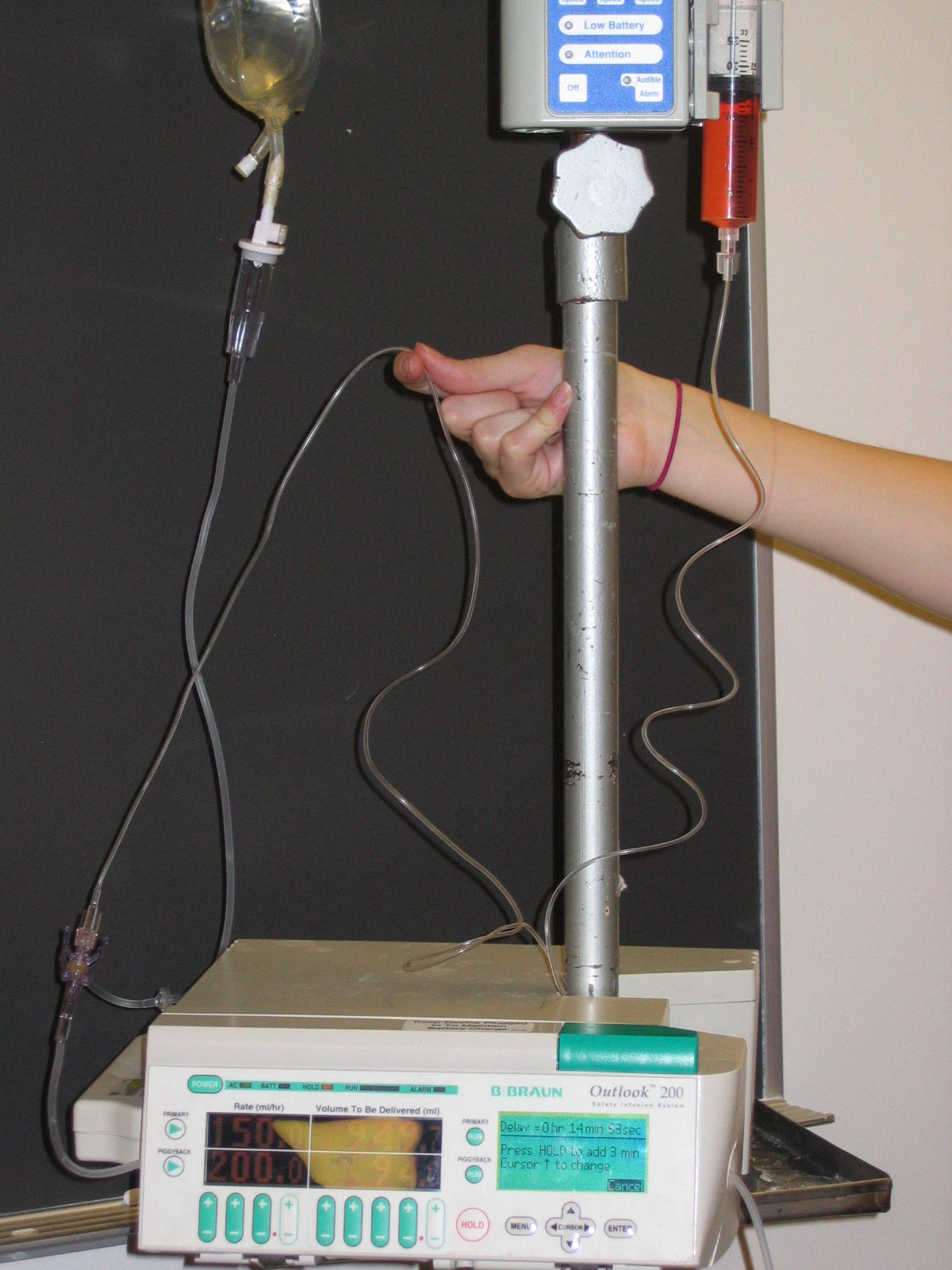|
Part 2: Question 3 You enter the patient's room to check on their IVPB infusion and see the following. What's wrong with this picture? A. The wrong medication is infusing B. The syringe pump is not loaded or running C. The IVPB solution bag should be hanging higher than the primary bag D. Nothing wrong
|
 |
| Part 2: Question 5 The nurse is preparing to administer an IV push medication. What's wrong with this picture? A. This port and needle are not compatible together B. The cap has not been removed from the needle C. There is air in the medication syringe D. Sterility has been broken
|
 |
Part 2: Question 10
Why is it important to use a buretrol and to carefully monitor IV fluid intake for small children and infants?
A. Children can more easily become fluid overloaded
B. Children experience a greater number of medication side effects
C. IV fluids are highly irritating to childrens' veins
D. The buretrol has multiple access sites on it
Part 2: Question 9
You are assessing a patient receiving IV fluids and are waiting for the pump to arrive. You adjust the roller clamp to a KVO (keep vein open) rate. The IV seems sluggish and only runs periodically. What would you suspect is the problem?
A. The patient probably has an air embolus
B. The site is infiltrated
C. The IV is most likely positional (runs dependent no patient's arm position)
D. Incorrect tubing has been selected for the fluids infusing
Part 2: Question 8
When opening a glass ampoule to draw up medications from it, it is important to always use:
A. Gloves
B. Filter needle
C. Blunt-tip needle
D. Clip-lock cannula
| Part 2: Question 7
The nurse is about to administer a medication via IV Syringe Pump. What's wrong with the setup? A. The IVSP must be attached directly to the IV insertion site B. The IVSP must be attached below the level of the pump C. The IVSP needs to be run with wider tubing D. The IVSP should not have a clip-lock cannula attached
|
 |
Part 2: Question 6
Your patient is receiving IV PCA Morphine. What is it important to assess on a regular basis (every 2 hours at SCH)? (SELECT ALL THAT APPLY):
A. Sedation level
B. Pain level
C. Lower extremity strength
D. Respiratory rate
Part 2: Question 4
Your patient is currently receiving Heparin in their primary line. The physician called to order a stat dose of Vancomycin. The nurse should (be sure you look up this medication as you would in clinical before answering this question): (Select all answers that apply)
A. Administer the Vancomycin as a piggyback onto the primary line
B. Educate the patient to call the nurse if they have ringing in their ears.
C. Stop the infusion and flush the line before giving the medication
D. Contact the physician regarding the incompatibility and for an order to stop the Heparin